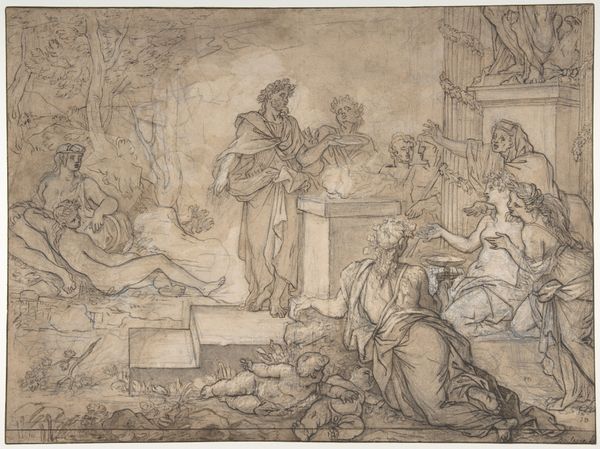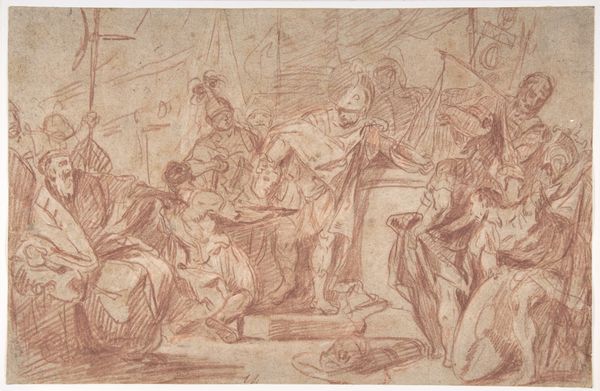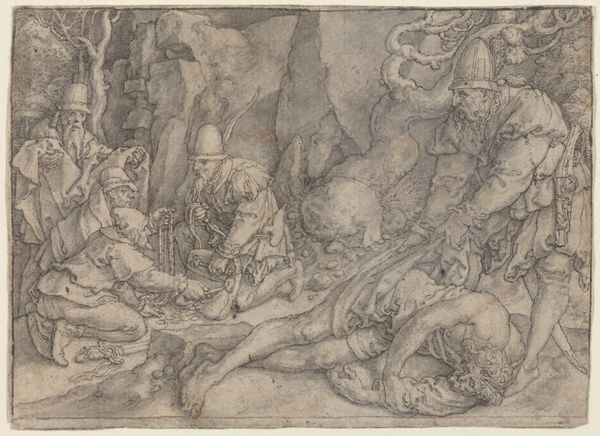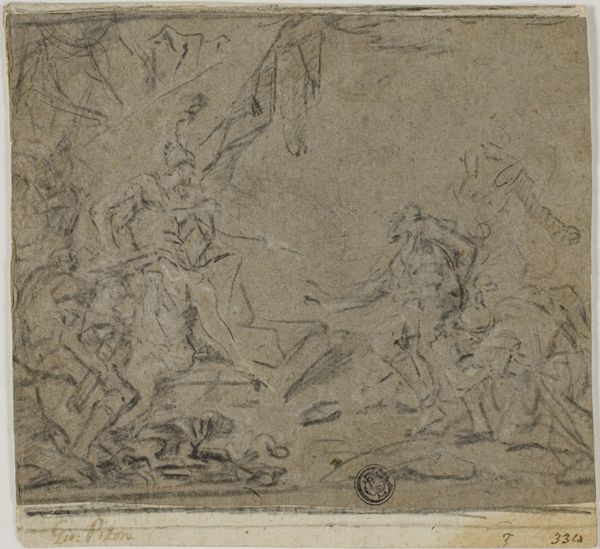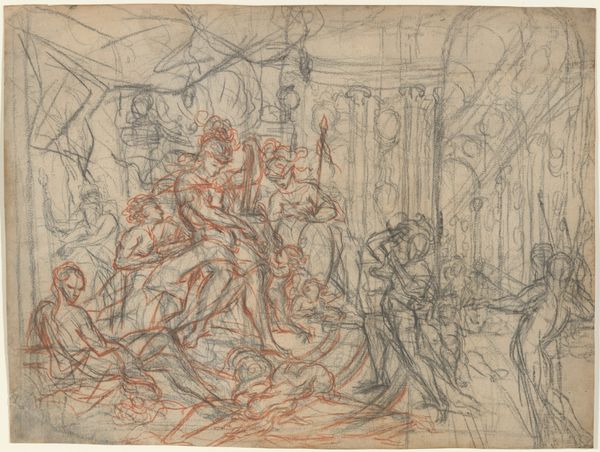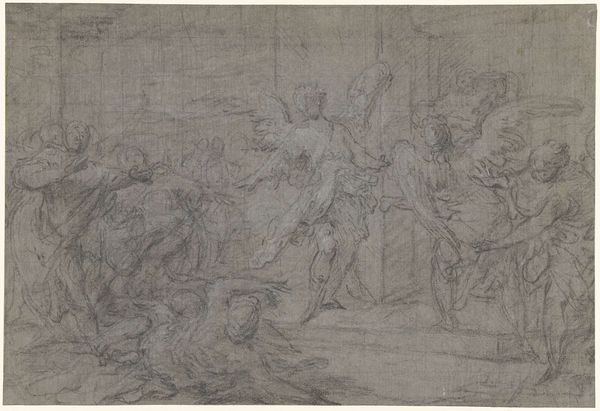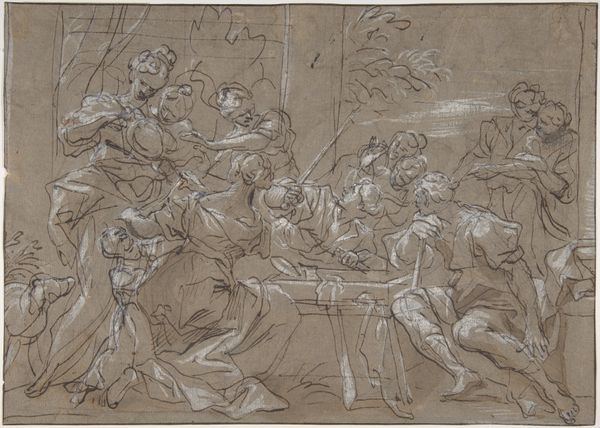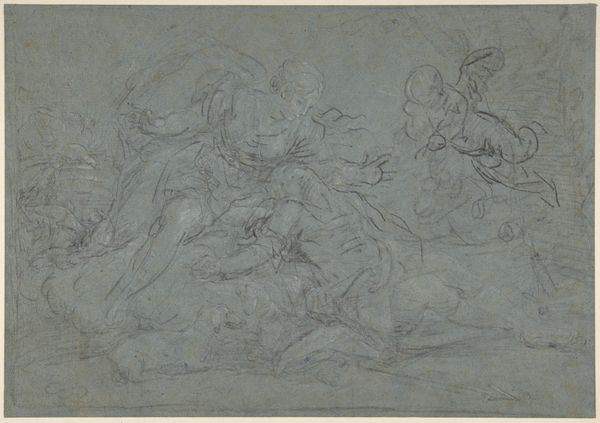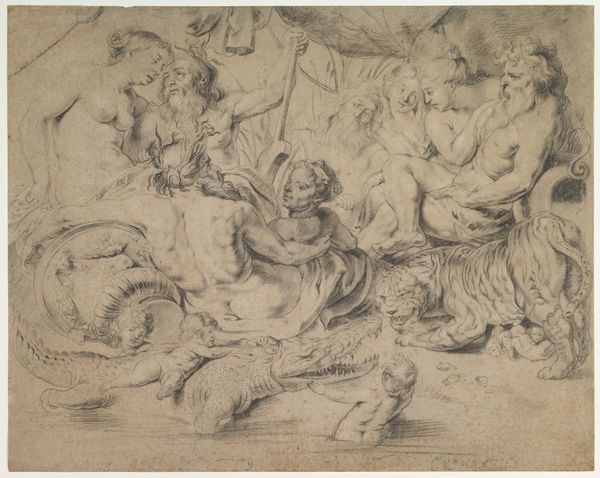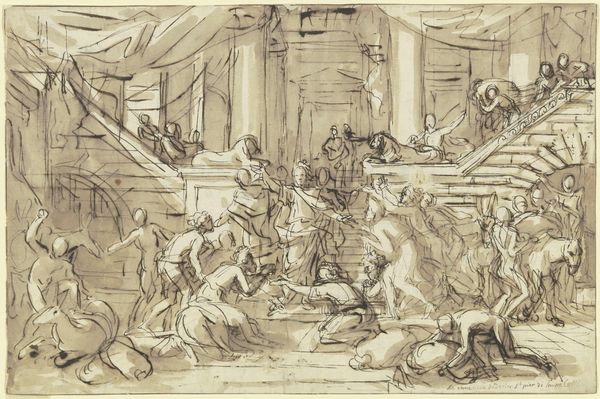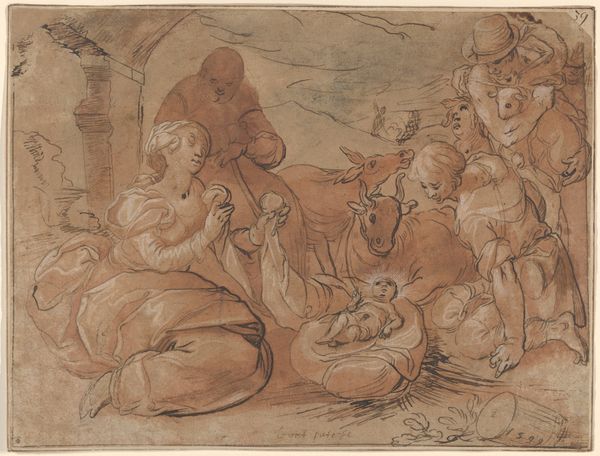
drawing, pencil, charcoal
#
drawing
#
neoclacissism
#
ink drawing
#
narrative-art
#
pen sketch
#
figuration
#
pencil
#
charcoal
#
history-painting
#
academic-art
Dimensions: sheet: 42.5 x 53.4 cm (16 3/4 x 21 in.)
Copyright: National Gallery of Art: CC0 1.0
Curator: Gabriel François Doyen’s “Brutus Condemning His Sons to Death,” dating to around 1760, offers a glimpse into a pivotal moment in Roman history. It's an ink and charcoal drawing that masterfully captures a scene fraught with conflict. Editor: The overwhelming feeling I get is one of severe melancholy. The gray washes and chaotic lines lend a heavy atmosphere that evokes a somber and deeply unsettling mood, hinting at themes of sacrifice and duty, especially concerning civic engagement versus the life of citizens. Curator: Absolutely. The drawing medium itself is critical here. The roughness of charcoal alongside the precision of ink emphasizes the emotional turmoil inherent in Brutus’s decision. Notice the varying line weights—thick, bold strokes to define the main figures versus finer lines used for background details. What do you think that might convey? Editor: The contrast likely mirrors the socio-political structure and gender roles, even then. Brutus, standing stoically in what appears to be the central space, symbolizes male authority, and political power while women present—note the figure wailing near what seems to be the center of the scene—react, showing a lack of agency during these historical narratives of grave historical importance. The women were often more likely than men to be presented as deeply grieving, and this adds a gendered element of historical art analysis. Curator: Good point. Consider, too, how the tools Doyen chose impact the speed of production. Was it a fast process to allow capturing intense fleeting emotion? Also, Academic art emphasized skill and this historical subject matter, appealing to elite patrons who might see in Brutus’s actions a justification for their own authoritative decisions. The consumption of art during this era was inextricably tied to power dynamics and reinforcing social order. Editor: Indeed. And thinking about the consumption and intended audience, in the context of rising nationalism and the French Revolution occurring a few years later. Brutus becomes an archetype of republican virtue, a figure invoked in revolutionary rhetoric which championed state values and priorities against tyranny at personal expense and potentially to all persons in the country or empire regardless of class or creed. Curator: Precisely, the materiality serves both expressive and ideological ends. We see in Doyen’s choice of materials a direct reflection of and response to his environment: using charcoal to invoke stark emotion but deploying the technique to reinforce Academic ideals for powerful audiences and those likely complicit with such social issues. Editor: Understanding all these nuances really transforms the way we see a simple charcoal sketch. What initially struck me as grief is really this dense mix of historical precedent, social messaging and commentary, gender disparity and revolution that would all factor into social discussions. Curator: I agree completely. When examining both form and political framework the art's context illuminates something far more layered.
Comments
No comments
Be the first to comment and join the conversation on the ultimate creative platform.
